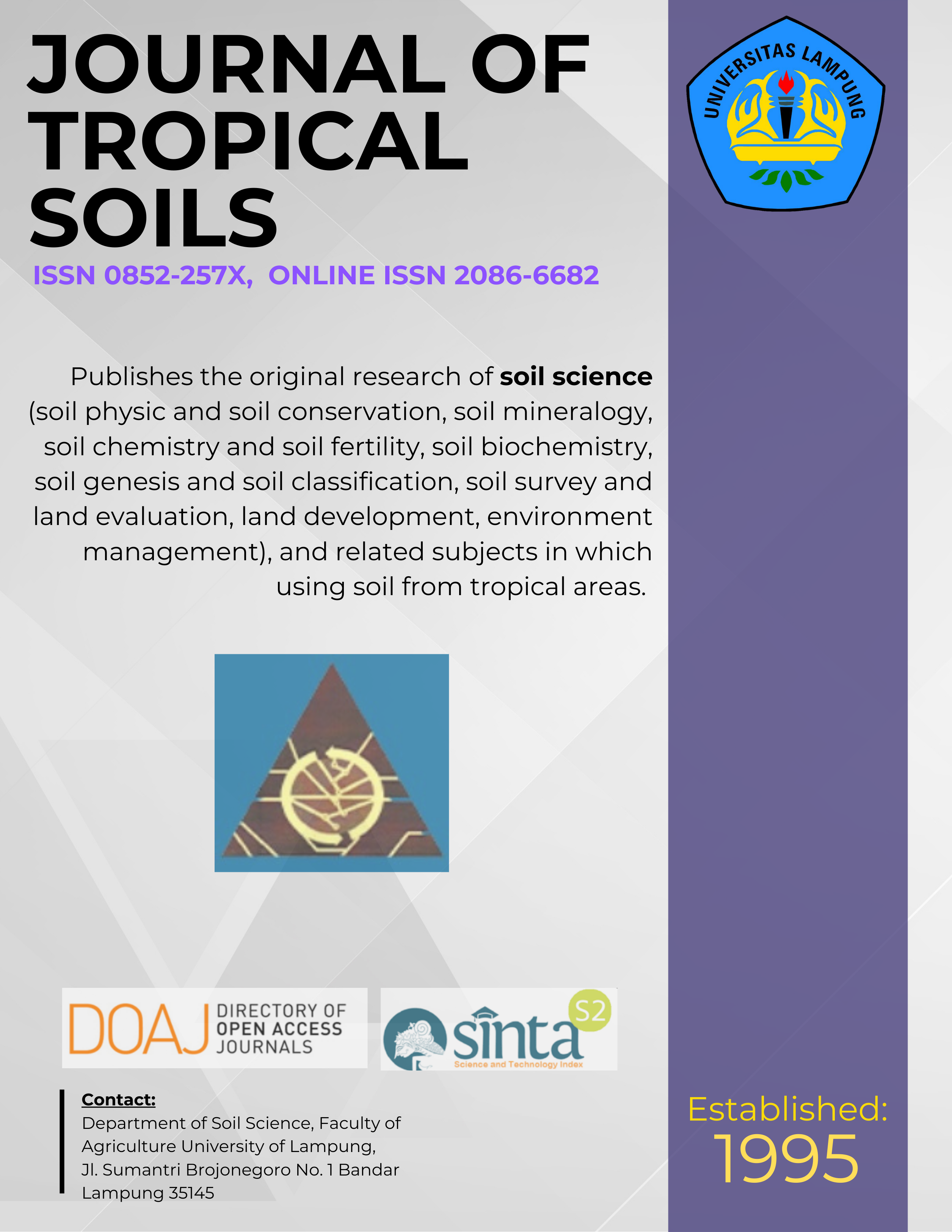Adding Organic Matter Enhanced the Effectiveness of Silicate Rock Fertilizer for Food Crops Grown on Nutritionally Disorder Soils: A Glasshouse Assessment
Main Article Content
Abstract
A glasshouse experiment was carried to identify effects of the application rate of ground silicate rock as a multinutrient
fertilizer (SRF) with and without organic matter (OM) on growth and nutrient status of food crops (rice,
corn, and soybean). Those crops were grown on 3 different soils in 2 cropping patterns, i.e., rice – soybean and corn
– soybean, providing 6 experimental sets. A completely randomized design was applied in each experimental set.
The treatment in each set consisted of 3 rates of SRF (5, 10, and 15 g kg-1), those 3 rates + 5 g kg-1 of OM, and a
control (without adding SRF or OM). The first crops (rice and corn) were grown up to 65 days, while the second
crop (soybean) was up to 40 days. Results indicated that for crops grown on less fertile soils, the application of SRF
only slightly increased growth of crops, mainly of the 2nd crops, and adding OM greatly increased the growth of
both the 1st and 2nd crops. In those experimental sets, about 60 – 80% of the variation of crop growth was significantly
determined by concentration of Cu and several other essential nutrients in crop tissue. In contrast, the growth for
crops grown on more fertile soils was not affected by the application of SRF or/and OM. It was concluded that
adding OM enhanced the effectiveness of SRF as a multi-nutrient fertilizer, and that may be used as an appropriate
multi-nutrient fertilizer or general ameliorant to sustain soil quality and remediate the nutritionally disorder soils.
Â
Â
Downloads
Article Details
Issue
Section
License for Authors
Authors who publish with this journal agree to the following terms:
- Authors retain copyright and grant the journal right of first publication with the work simultaneously licensed under a Creative Commons Attribution License that allows others to share the work with an acknowledgement of the work's authorship and initial publication in this journal.
- Authors are able to enter into separate, additional contractual arrangements for the non-exclusive distribution of the journal's published version of the work (e.g., post it to an institutional repository or publish it in a book), with an acknowledgement of its initial publication in this journal.
- Authors are permitted and encouraged to post their work online (e.g., in institutional repositories or on their website) prior to and during the submission process, as it can lead to productive exchanges, as well as earlier and greater citation of published work (See The Effect of Open Access).
License for Regular Users
Other regular users who want to cite, distribute, remix, tweak, and build upon author’s works, even for commercial purposes, should acknowledge the work’s authorship and initial publication in this journal, licensed under a Creative Commons Attribution License.

